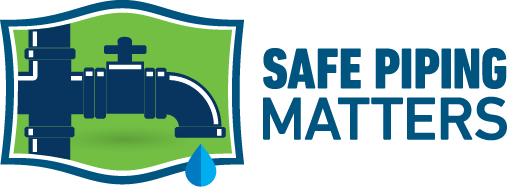Impacts of Pipe Leaching on Water
Chemical interactions between water and piping materials — typically oxidation — and the principles of osmosis mean all piping materials leach substances into water to some degree. Some materials are far safer than others, however. For example, lead pipes and fittings have emerged as a serious public health threat in homes, schools, and businesses with aging plumbing. The leaching impacts of commonly used materials such as copper and plastic are less well known. Here’s an overview based on current research.
Lead Leaching:
Dangerous
Lead is an established neurotoxin and dangerous to human health; prolonged exposure can lead to a range of serious conditions. According to the Environmental Protection Agency, no level of lead exposure is safe.
Lead pipes and fittings were installed for decades, until their use was phased out in the 1950s and 1960s, eventually being banned in the 1980s. Biofilms covering the interiors of such pipes reduced the level of leaching. If water chemistry changed, or other factors such as construction disrupted the biofilms, lead would recontaminate water and make it unsafe to drink. Examples from Flint, Michigan; Newark, New Jersey; Washington, DC; Milwaukee, Wisconsin; and thousands of other communities show the impacts of contamination and help explain why recent infrastructure investments will work to replace lead with safer materials.
Plastic Leaching:
Concerning
Leaching from plastic pipes has been well documented. In 2018, a comprehensive study found 163 substances leached from plastic piping, including known human toxins and carcinogens such as benzene, which is regulated at just 5 ppb. As concerning, 74 of the leached substances are not currently regulated, meaning their effects on human health are unknown. Plastic pipe, fittings, and the chemical solvents and adhesives used to bond and seal them all use complex chemical blends, hydrocarbons and other additives. These substances leach from pipe walls over time, especially in plumbing exposed to heat or hot water. The effects of additives used by water companies to disinfect drinking water also can interact with chemicals in the plastics, producing secondary chemicals that are not well understood.
Copper Leaching:
Safe for Most
Copper pipes leach traces of copper at levels generally regarded as safe. Moreover, at these low levels, copper is an essential nutrient to maintain blood health and support muscle elasticity; this is especially true for the heart. Humans consume copper from a number of foods, including whole grains, dark chocolate, and shellfish.
Nearly all individuals will have no impact on their health caused by leaching from lead-free copper pipe and fittings. Only those affected by Wilson’s Disease, a health condition in which the body does not regulate copper, should have cause for concern. The limit for copper is 1,300 ppb, but average levels in North America range from 20- 75 ppb; much less than what is considered unsafe.
